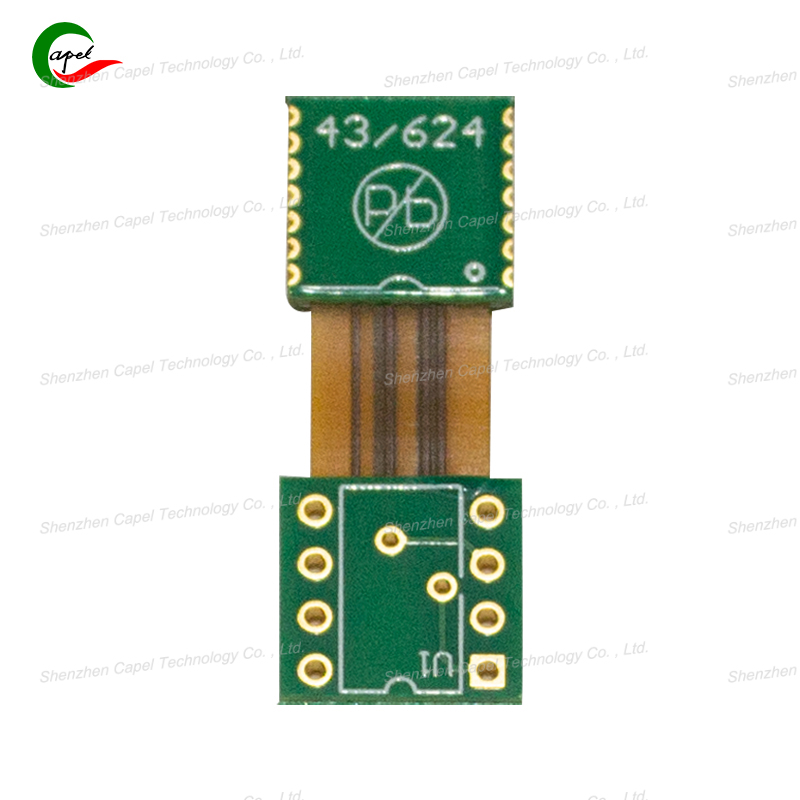Date: 2025-10-21
When designing rigid-flex PCBs for high-frequency applications, the flexible sections often become the weak link in your grounding system. I've seen too many designs where perfect signal integrity in rigid areas falls apart once the board needs to bend. The challenge is real: how do you maintain low-impedance grounding in areas that need to flex repeatedly?
Through multiple projects in automotive radar and 5G modules, we've developed reliable grounding strategies that survive real-world flexing while maintaining electrical performance.
The Mechanical-Electrical Balancing Act
The thin, flexible substrates (typically 25-50μm) that allow bending work directly against what we need for ideal grounding. A solid copper plane thick enough for optimal conductivity would make the flexible section as stiff as the rigid areas.
Bending-Induced Performance Degradation
Every flex cycle mechanically stresses the copper. We measured grounding impedance increases from 3Ω to over 8Ω after 2,000 bend cycles on a wearable device. The constant movement gradually degrades connections and stretches materials.
Space Constraints in High-Density Designs
Modern rigid-flex designs pack significant functionality into tight spaces. The flexible areas often have minimal room between signals for adequate grounding structures.
Strategic Via Placement Creates a Flexible Ground Grid
Instead of treating vias as an afterthought, we design them as an integral ground system:
Dense arrays with 0.5-1.0mm spacing provide multiple parallel paths
0.2-0.3mm diameter vias maintain manufacturability while ensuring reliability
Placement along edges and around noise sources contains interference
The grid approach reduces impedance by 40% compared to sparse vias, without compromising flexibility. The key is keeping via spacing under 1.5mm - wider spacing creates impedance variations that noise exploits.
Optimized Ground Planes for Flexible Areas
Solid copper planes crack; no copper planes cause EMI issues. The solution lies between:
Mesh Planes
0.2mm copper lines in a 0.5mm grid pattern
Provides continuous grounding while allowing natural bending
Significantly reduces common-mode noise
Directional Strip Planes
0.3-0.5mm strips running parallel to the primary bend direction
Ideal for long, narrow flex sections
Easier to route around dense component placement
We typically achieve best results with 40-60% copper coverage. Below 40%, impedance rises too high; above 70%, the section becomes too stiff.
Bridging the Critical Rigid-Flex Transition
This interface represents the most common failure point. Our solution involves dedicated transition structures:
Copper bridges extending 2-3mm from rigid to flexible areas
Conductive adhesive bonding for reliable connection
Thin PI protection layers (10-15μm) to manage stress concentration
Properly implemented bridges can reduce transition impedance from 10Ω to 3Ω while surviving thousands of flex cycles.
Application-Specific Approach
High-frequency (5G, radar): Target ≤3Ω using dense vias with mesh planes
General purpose: ≤5Ω using strip planes with moderate via spacing
Material Considerations
Oxygen-free copper provides measurable conductivity improvement
25μm thickness balances conductivity and flexibility
Avoid ultra-thin (<18μm) copper for ground structures unless absolutely necessary
Validation Methods That Matter
Our standard qualification includes:
Impedance measurement after 1,000+ bend cycles
Radiated EMI testing per industry standards
Mechanical reliability testing to 10,000 cycles
Inadequate Via Distribution
Single ground vias per segment guarantee problems. We always use multiple vias (minimum 3-4) with additional vias for critical sections.
Overly Stiff Ground Structures
Solid copper planes might simulate well but crack during actual use. The flexibility requirement must drive material choices.
Neglecting Transition Zones
Assuming continuous grounding across rigid-flex interfaces leads to predictable failures. Dedicated bridging is essential.
Successful rigid-flex PCB grounding requires:
Distributed via arrays creating flexible ground grids
Mesh or strip planes instead of solid copper
Purpose-designed rigid-flex transition bridges
Real-world validation under actual bending conditions
The goal is grounding that remains stable and effective throughout the product's mechanical life, not just on the test bench. By implementing these approaches, we've consistently achieved reliable performance in demanding applications from automotive to telecommunications.
related link:
Kaboer manufacturing PCBs since 2009. Professional technology and high-precision Printed Circuit Boards involved in Medical, IOT, UAV, Aviation, Automotive, Aerospace, Industrial Control, Artificial Intelligence, Consumer Electronics etc..